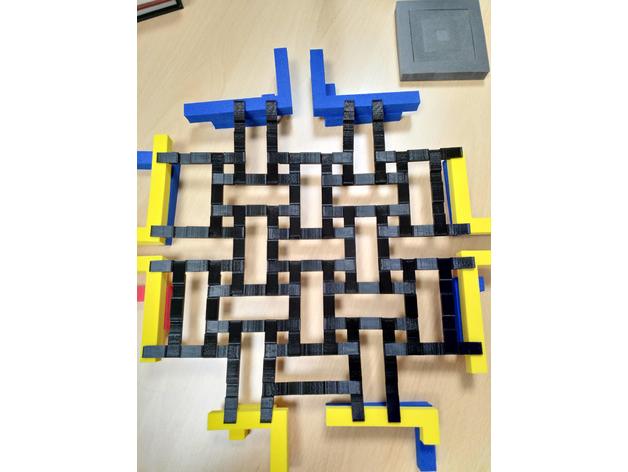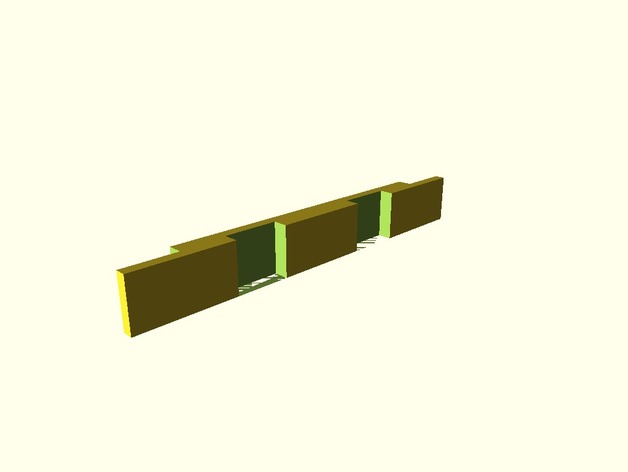At work we’ve got a 3D printer. In this series of posts I’ll share some of the designs I’ve made.

The roof of the Sheldonian theatre in Oxford, built from 1664 to 1669, is constructed from timber beams which are unsupported apart from at the walls, and held together only by gravity.
The design of the roof was due to John Wallis, the Savilian Professor of Geometry.
“So effective [was the roof] that for nearly a century the University Press stored its books …, and for many years it was the largest unsupported floor in existence”
Each beam is a straightforward cuboid with some notches cut out of it. Rather than whittle away at balsa wood, I decided to 3D print some.
To construct the pattern, arrange the beams on top of each other. Every beam goes the same way up – the notches in the middle should be on the top side.
Four beams woven together will show the general principle – rest the free ends on something, and the middle will stay aloft without any support underneath it. The pattern can grow indefinitely, by adding more beams.
There’s some more information about the roof of the Sheldonian theatre in this document about the Maths in the City walking tour of Oxford.

This was really easy to design in OpenSCAD: I started with a long cuboid, then cut square notches out of the ends on one side, and the middle in the other. I can’t remember how much thinking I did about where the notches go, or if it matters – either way, I got lucky and it worked! The first batch didn’t quite fit together because either the planks were too big or the notches too small, so I made the notches a bit bigger to add some wiggle room and I was away. The planks don’t take long to print, and you can do it at low resolution, so within a work day I had a few dozen.
You can download .scad and .stl files for the plank at Thingiverse.
Very interesting article… I use the cuboid 1:4:9 as a building panel, this is the first historical reference i’ve ever come across where a cuboid forms a structural array. It was hard for me to see from the photo as to how the notches worked to hold things together?
I’m not authorised to view “this document about the Maths in the City walking tour of Oxford” https://www.maths.ox.ac.uk/system/files/attachments/Oxford%20tour%20guidebook_0.pdf
:(